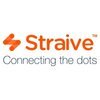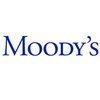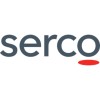Filter interviews by
Acuity Knowledge Partners Associate Interview Questions and Answers
23 Interview questions
DSCR measures cash flow available for debt service, while Interest Coverage Ratio assesses ability to pay interest expenses.
DSCR (Debt Service Coverage Ratio) = Net Operating Income / Total Debt Service.
Interest Coverage Ratio = EBIT (Earnings Before Interest and Taxes) / Interest Expense.
A DSCR of less than 1 indicates insufficient cash flow to cover debt obligations.
An Interest Coverage Ratio below 1 suggests a ...
All three financial statements provide insights into a company's financial health and performance over time.
They all reflect the financial performance and position of a business.
Each statement is interconnected; for example, net income from the P&L affects cash flow.
They are used by stakeholders for decision-making; investors analyze them for investment potential.
They adhere to accounting principles, ensuring ...
DCF model is a valuation method used to estimate the value of an investment based on its expected future cash flows.
Discounted Cash Flow (DCF) model calculates the present value of expected future cash flows by discounting them back to their present value.
It involves forecasting future cash flows, determining a discount rate, and calculating the net present value.
The formula for DCF is: DCF = CF1/(1+r)^1 + CF2/(1+...
EPS benchmark is the standard against which a company's earnings per share are compared.
EPS benchmark varies by industry and company size
Common benchmarks include industry averages, historical performance, and analyst estimates
Investors use EPS benchmarks to evaluate a company's profitability and growth potential
The 40% increase in sales for Colgate could be due to a merger with another company, resulting in access to new customers.
Mergers can lead to an increase in market share and customer base.
Access to new distribution channels and markets can boost sales.
Synergies from combining resources and expertise can drive growth.
Increased brand recognition and loyalty from customers of the merged company can contribute to high...
The profit considered for giving a loan to a company includes net profit, operating profit, and EBITDA.
Net profit: Indicates the overall profitability of the company after all expenses are deducted from revenue.
Operating profit: Shows the profit from the core business operations before interest and taxes.
EBITDA (Earnings Before Interest, Taxes, Depreciation, and Amortization): Reflects the company's operating perf...
The cost of goods sold will decrease if a company buys raw materials at a cheaper rate.
Lower cost of raw materials will lead to lower cost of goods sold
Increased profit margin due to cost savings
Competitive advantage in pricing products
There are two types of profits in an income statement: gross profit and net profit.
Gross profit is the difference between revenue and the cost of goods sold.
Net profit is the remaining amount after deducting all expenses from the gross profit.
Both profits are important indicators of a company's financial performance.
Credit worthiness of a company can be measured by analyzing financial statements, credit history, industry trends, and management quality.
Review financial statements such as balance sheet, income statement, and cash flow statement to assess profitability, liquidity, and leverage.
Check credit history including payment history, outstanding debts, and credit utilization ratio.
Evaluate industry trends and economic con...
Improving decreasing working capital involves managing inventory, accounts receivable, and accounts payable effectively.
Optimize inventory levels to reduce excess stock and free up cash
Implement efficient accounts receivable processes to shorten payment cycles
Negotiate longer payment terms with suppliers to improve cash flow
Monitor and analyze cash flow regularly to identify areas for improvement
Acuity Knowledge Partners Associate Interview Experiences
26 interviews found
I applied via Referral and was interviewed in Jul 2024. There was 1 interview round.
(5 Questions)
- Q1. How will you measure credit worthiness of a company
- Ans.
Credit worthiness of a company can be measured by analyzing financial statements, credit history, industry trends, and management quality.
Review financial statements such as balance sheet, income statement, and cash flow statement to assess profitability, liquidity, and leverage.
Check credit history including payment history, outstanding debts, and credit utilization ratio.
Evaluate industry trends and economic conditio...
- Q2. How many profits are there in income statement
- Ans.
There are two types of profits in an income statement: gross profit and net profit.
Gross profit is the difference between revenue and the cost of goods sold.
Net profit is the remaining amount after deducting all expenses from the gross profit.
Both profits are important indicators of a company's financial performance.
- Q3. Which profit will you take in to consideration for giving loan to a company
- Ans.
The profit considered for giving a loan to a company includes net profit, operating profit, and EBITDA.
Net profit: Indicates the overall profitability of the company after all expenses are deducted from revenue.
Operating profit: Shows the profit from the core business operations before interest and taxes.
EBITDA (Earnings Before Interest, Taxes, Depreciation, and Amortization): Reflects the company's operating performan...
- Q4. What will be the effect in cost of goods sold if a company has bought raw materials in cheaper rate
- Ans.
The cost of goods sold will decrease if a company buys raw materials at a cheaper rate.
Lower cost of raw materials will lead to lower cost of goods sold
Increased profit margin due to cost savings
Competitive advantage in pricing products
- Q5. Colgate company has a 40% increase in their ssale, what can be the reason? ans --- due to merger with other company by which they get merged companies cutomers
- Ans.
The 40% increase in sales for Colgate could be due to a merger with another company, resulting in access to new customers.
Mergers can lead to an increase in market share and customer base.
Access to new distribution channels and markets can boost sales.
Synergies from combining resources and expertise can drive growth.
Increased brand recognition and loyalty from customers of the merged company can contribute to higher sa...
Interview Preparation Tips
I applied via Naukri.com and was interviewed in Jun 2024. There were 2 interview rounds.
(2 Questions)
- Q1. What is EV, equity value ? formula
- Ans.
Equity value (EV) is the market value of a company's equity, calculated by adding market capitalization, debt, minority interest, and preferred shares, and subtracting cash and cash equivalents.
EV = Market Capitalization + Debt + Minority Interest + Preferred Shares - Cash & Cash Equivalents
Market capitalization is the total market value of a company's outstanding shares.
Debt includes all interest-bearing liabilities o...
- Q2. How are all financial statements connected ?
- Ans.
Financial statements are connected through the flow of information and transactions between them.
The income statement shows the company's revenues and expenses, which directly impact the net income reported on the statement of cash flows.
The balance sheet reflects the company's financial position at a specific point in time, with assets equaling liabilities and equity, which is also reflected in the statement of cash f...
(2 Questions)
- Q1. Similar basic financial services questions
- Q2. Questions on company profiling, industry research
Interview Preparation Tips
- Financial Analysis
- Finance
- Market Research
I applied via LinkedIn and was interviewed in Sep 2024. There was 1 interview round.
(2 Questions)
- Q1. Process related questions
- Q2. Complex situation faced in work
Interview Preparation Tips
I appeared for an interview in Jan 2025.
(1 Question)
- Q1. Wacc, interconnection of financial statements, cost of equity, business model of Netflix, beta, p/e to beta relationship, FCFF,FCFE etc
(2 Questions)
- Q1. What is one particular common between PL BS and CFS.
- Ans.
All three financial statements provide insights into a company's financial health and performance over time.
They all reflect the financial performance and position of a business.
Each statement is interconnected; for example, net income from the P&L affects cash flow.
They are used by stakeholders for decision-making; investors analyze them for investment potential.
They adhere to accounting principles, ensuring consi...
- Q2. DCF Assumptions
Interview Preparation Tips
DCF and assumptions
Excel Financials BS PL
(2 Questions)
- Q1. About yourself Intro and all
- Ans.
I am a dedicated professional with a passion for problem-solving and a strong background in project management and teamwork.
Graduated with a degree in Business Administration, focusing on project management.
Interned at XYZ Corp, where I led a team project that improved efficiency by 20%.
Volunteered at a local non-profit, organizing community events that raised over $10,000.
Skilled in data analysis and using tools like ...
- Q2. Work ex Prev role
I appeared for an interview in Mar 2025, where I was asked the following questions.
- Q1. Difference between DSCR and Interest Coverage Ratio
- Ans.
DSCR measures cash flow available for debt service, while Interest Coverage Ratio assesses ability to pay interest expenses.
DSCR (Debt Service Coverage Ratio) = Net Operating Income / Total Debt Service.
Interest Coverage Ratio = EBIT (Earnings Before Interest and Taxes) / Interest Expense.
A DSCR of less than 1 indicates insufficient cash flow to cover debt obligations.
An Interest Coverage Ratio below 1 suggests a compa...
- Q2. KPIs in Private Equity
- Ans.
Key Performance Indicators (KPIs) in Private Equity measure investment success and operational efficiency.
Internal Rate of Return (IRR): Measures the profitability of investments over time.
Multiple on Invested Capital (MOIC): Indicates how much value is generated for each dollar invested.
Cash-on-Cash Return: Assesses the cash income generated relative to the cash invested.
Exit Multiple: Evaluates the valuation of a com...
I applied via Approached by Company and was interviewed in May 2024. There were 2 interview rounds.
(1 Question)
- Q1. Basic questions related to notice period, expected CTC and current CTC, location etc.
(2 Questions)
- Q1. 3 statement linking
- Q2. EBit,Ebitda, different types of ratios
- Ans.
EBIT stands for Earnings Before Interest and Taxes, EBITDA stands for Earnings Before Interest, Taxes, Depreciation, and Amortization. Ratios are used to analyze financial performance.
EBIT is a measure of a company's profitability before interest and taxes are taken into account.
EBITDA is a measure of a company's profitability before interest, taxes, depreciation, and amortization are taken into account.
Ratios like EBI...
(2 Questions)
- Q1. Walk me through your profile
- Ans.
I have a Bachelor's degree in Business Administration and 5 years of experience in marketing and sales.
Bachelor's degree in Business Administration
5 years of experience in marketing and sales
Proficient in market research and analysis
Strong communication and negotiation skills
- Q2. Salary expectations and notice period
(2 Questions)
- Q1. Sector knowledge
- Q2. Financial modelling process
(1 Question)
- Q1. Basic HR questions
Had to make a presentation on a topic given by them.
(1 Question)
- Q1. Based on the presentation
(1 Question)
- Q1. Interview with the MD
Top trending discussions






Acuity Knowledge Partners Interview FAQs
Some of the top questions asked at the Acuity Knowledge Partners Associate interview -
The duration of Acuity Knowledge Partners Associate interview process can vary, but typically it takes about less than 2 weeks to complete.
Tell us how to improve this page.
Acuity Knowledge Partners Interviews By Designations
- Acuity Knowledge Partners Analyst Interview Questions
- Acuity Knowledge Partners Associate Interview Questions
- Acuity Knowledge Partners Senior Associate Interview Questions
- Acuity Knowledge Partners Delivery Lead Interview Questions
- Acuity Knowledge Partners Delivery Manager Interview Questions
- Acuity Knowledge Partners Financial Analyst Interview Questions
- Acuity Knowledge Partners Equity Research Analyst Interview Questions
- Acuity Knowledge Partners Business Analyst Interview Questions
- Show more
Interview Questions for Popular Designations
Overall Interview Experience Rating
based on 22 interview experiences
Difficulty level
Duration
Associate Interview Questions from Similar Companies
Acuity Knowledge Partners Associate Reviews and Ratings
based on 201 reviews
Rating in categories
|
Senior Associate
2.1k
salaries
| ₹9 L/yr - ₹15.5 L/yr |
|
Associate
1.6k
salaries
| ₹5.3 L/yr - ₹12 L/yr |
|
Delivery Lead
1.6k
salaries
| ₹13 L/yr - ₹22 L/yr |
|
Delivery Manager
892
salaries
| ₹16.5 L/yr - ₹27 L/yr |
|
Analyst
677
salaries
| ₹3.5 L/yr - ₹8.5 L/yr |

Access Healthcare

S&P Global

IKS Health

Straive
- Home >
- Interviews >
- Acuity Knowledge Partners Interview Questions
















